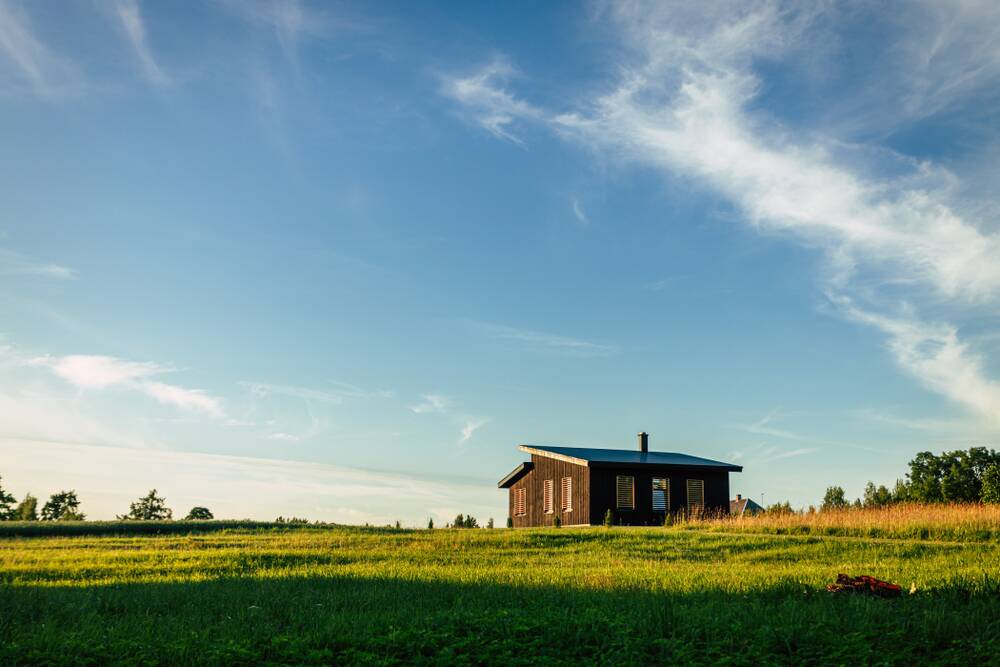Living in the countryside offers a tranquil escape from the hustle and bustle of city life. However, as with any location, rural areas are not immune to potential safety concerns. Protecting your home and property in these isolated regions requires careful consideration and implementation of effective security measures.
This article delves into the nuances of home security for rural areas, providing comprehensive insights into the strengths, weaknesses, and essential steps to enhance your residence’s safety. Whether you’re a seasoned homeowner or a newcomer to the countryside, this guide will empower you with the knowledge and strategies to safeguard your abode in this unique environment.
Introduction: Delving into the Heart of Rural Security
Rural landscapes present a distinctive set of challenges when it comes to home security. The remoteness of many rural areas can make timely assistance difficult in the event of an emergency. Additionally, limited access to security infrastructure, such as police patrols and surveillance cameras, further compounds the need for proactive measures.
Understanding the specific risks associated with living in rural areas is crucial. These may include: Limited access to emergency responders, leaving residents vulnerable in case of an emergency; isolated homes, offering opportunities for undetected break-ins; and lack of street lighting, creating dark spots that can attract criminal activity.
Despite these challenges, rural areas offer unique advantages for home security. The sense of community fosters a watchful eye, with neighbors often looking out for each other’s properties. Furthermore, the lower population density reduces the likelihood of encountering strangers and suspicious activities.
Strengths of Safety in the Countryside: Home Security for Rural Areas
1. Strong Community Bonds: Rural communities often possess a strong sense of unity and neighborliness. This creates a watchful environment where residents look out for each other’s well-being, providing an additional layer of informal security.
2. Lower Population Density: The dispersal of homes in rural areas means fewer opportunities for strangers to loiter or engage in suspicious activities. This reduces the likelihood of encounters with potential threats.
Weaknesses of Safety in the Countryside: Home Security for Rural Areas
1. Limited Access to Emergency Responders: Remote locations may experience longer response times for emergency services, such as police or fire departments. This can leave residents vulnerable in the event of an urgent situation.
2. Lack of Security Infrastructure: Rural areas often lack access to security infrastructure, such as surveillance cameras and street lighting. This can create opportunities for undetected break-ins or criminal activity.
15 Essential Home Security Strategies for Rural Areas
1. Access Control: Install sturdy locks on all doors and windows. Consider implementing a security alarm system with motion sensors and door and window contacts.
2. Perimeter Protection: Establish clear boundaries around your property with fences, hedges, or other barriers. Install outdoor lighting to deter intruders from approaching.
3. Neighborhood Watch: Foster a sense of community by initiating or joining a neighborhood watch program. Regular patrols and communication help increase awareness and deter crime.
7 FAQs on Home Security for Rural Areas
1. What are the common challenges of home security in rural areas?
Limited access to emergency services, lack of security infrastructure, and isolated homes.
2. How can I enhance my home’s physical security?
Install sturdy locks, security alarm systems, and reinforce doors and windows.
3. Is it essential to have a neighborhood watch program?
Yes, neighborhood watch programs increase community awareness and act as a deterrent to crime.
Conclusion: Empowering Rural Homeowners with Safety
Enhancing home security in rural areas requires a combination of effective measures and community involvement. By understanding the unique challenges and strengths of rural living, homeowners can implement comprehensive strategies to safeguard their property and ensure the well-being of their families.
Remember, securing your rural home is an ongoing process that requires vigilance and adaptation. By staying informed, collaborating with your community, and implementing the recommendations outlined in this article, you can create a safe and secure haven in the countryside.
As responsible homeowners, we all have a role to play in shaping a more secure environment for ourselves and our neighbors. Let us embrace the challenges and opportunities of rural home security, working together to create a countryside where peace of mind prevails.
Disclaimer
The information provided in this article is intended as a general guide and should not be relied upon as the sole source of home security advice. It is recommended that homeowners consult with qualified security professionals to develop a comprehensive security plan that meets their specific needs and circumstances.
